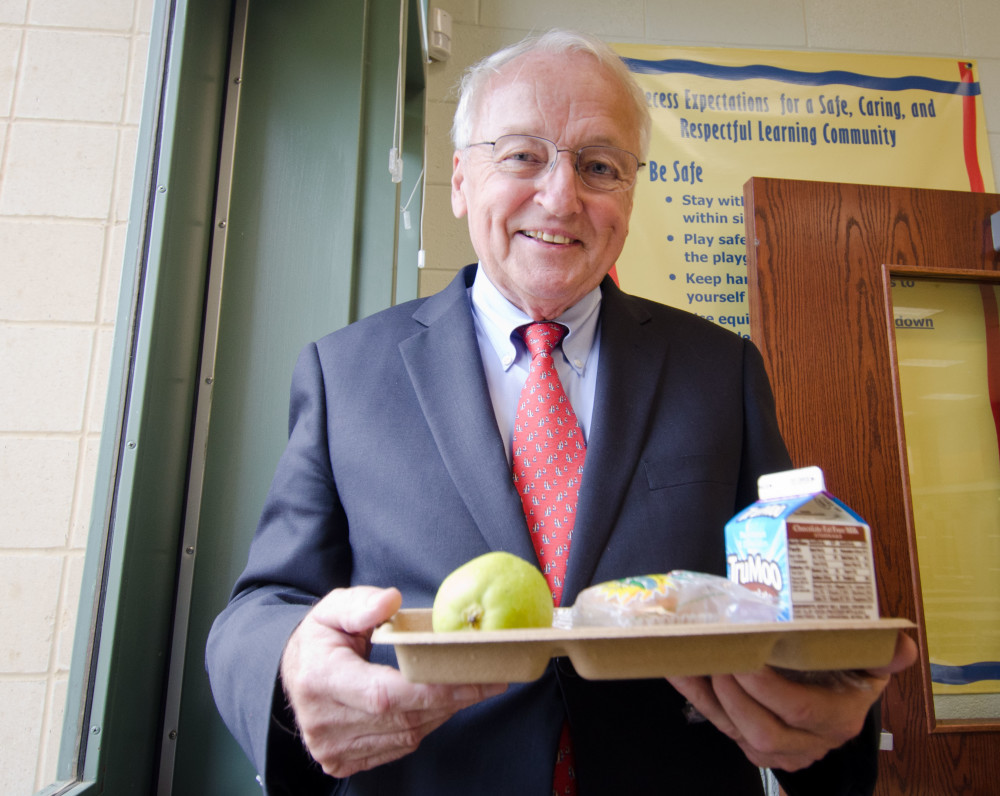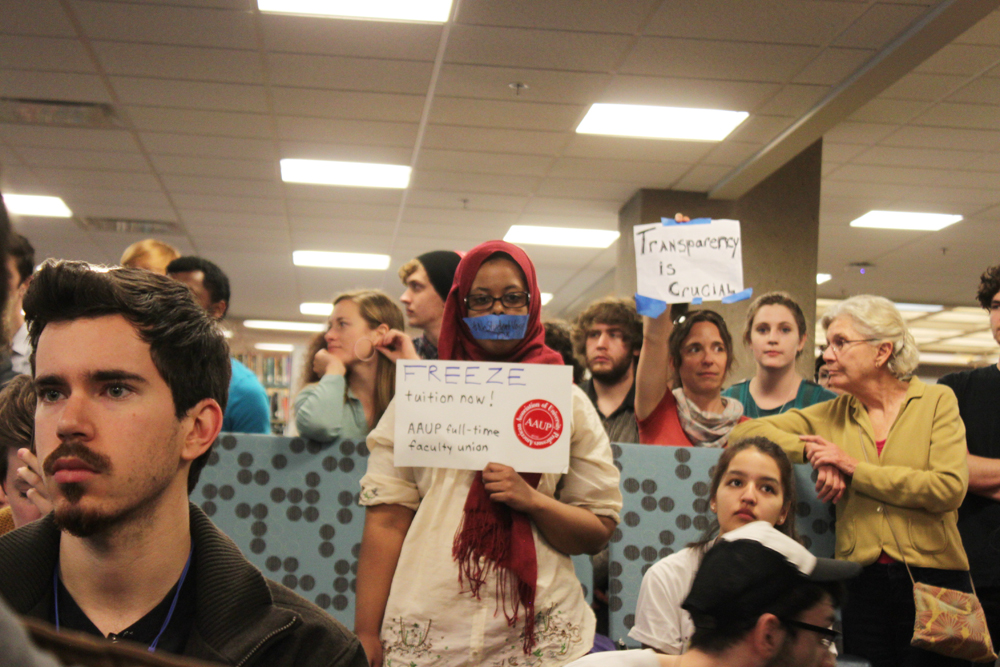Kevin Concannon, Undersecretary for Food, Nutrition and Consumer Services in the United States Department of Agriculture, visited Professor Belinda Zeidler’s Nutrition for Health class on Feb. 27.
Concannon gave a presentation on the programs his department institutes in the U.S. These programs work to address food-related issues such as food insecurity, nutrition and sustainable agriculture.
Concannon spent several days in the Portland area visiting schools that have implemented the National School Lunch Program—a USDA institution that provides free or low-cost breakfast and lunch to children in public and private schools across America.
“Today, the school-based food programs serve 15 million children lunch and 14 million children breakfast,” Concannon said. “The program is a huge accomplishment for us because it combats issues like food insecurity and offers nutritious meals for students who may not have access to healthy choices at their own homes.”
A student in Zeidler’s class asked Concannon to define food insecurity in this country.
“Can you talk about the weighing of actual food scarcity versus the fear of scarcity and how they may be contributing to this ironic situation that we have noticed, where sometimes we see those [who] are food insecure are actually obese? Could you reconcile that relationship?” the student asked.
Concannon said the interconnections of the American food supply are complex. He added that access to healthy options can account for the relationship between obesity and food insecurity, where those who are affected by a physical and or mental association to food insecurity tend to be heavier and overall less healthy.
“Where I live, a little outside of Washington, D.C.,… there are four different major food supermarket chains, and then there’s a Whole Foods [Market], a Trader Joe’s, and a Mom’s [Organic Market]—an organic food chain,” Concannon said. “But on the Southeast section, the poorest section of Washington, they don’t have nearly enough access or choices. So the government has an obligation to solve these problems.”
Every five years, the USDA puts forth a scientific report that recommends dietary guidelines. The Scientific Report of the 2015 Dietary Guidelines Advisory Committee (Advisory Report) was submitted in February and will be released later this year. Concannon explained how this report is eventually translated into a policy document that governs the menus for the government programs like NSLP.
Another student asked about sustainability: “How is that accounted for in the dietary guidelines and agricultural practices?”
“The new report that has just been issued basically is saying that we ought to eat a more plant-based diet, one that is sustainable,” Concannon said. “But when this kind of report is released it gets a lot of heat from the cattle industry. We try to resist the push from the industry, but usually the industry then goes to congress. Money these days pollutes the process.”
After Concannon addressed educational aspects during his presentation, he discussed political issues. He highlighted how, in a capitalist nation, industry has influence—especially in the political spectrum—and that affects the policies that are administrated by the USDA.
Zeidler said she asked her class to respond to Concannon’s presentation in a later class meeting, and they expressed appreciation toward his openness on the subjects he addressed.
“I thought the undersecretary was quite frank regarding the problems that he has faced from strong industry influence to party alignment and control,” Zeidler said in an email.
Zeidler added that Concannon spoke positively of Oregon’s programs meant to address food-related issues.
“It was great to hear him talk about how wonderful Oregon is doing to provide healthy school lunches and our farm-to-school programs and farm-to-table programs that make it easier for people who are struggling to purchase or receive healthy and fresh food,” Zeidler said.








This is so riveting, please keep us posted on the situation
Additionally, I would like to see more work from you! You seem like a great writer